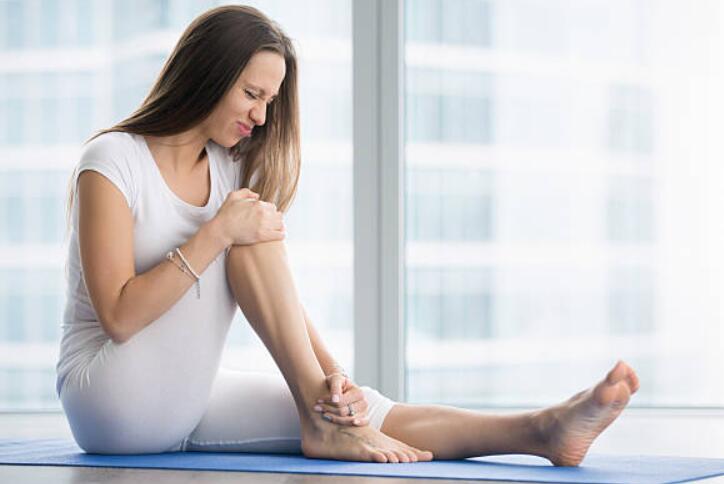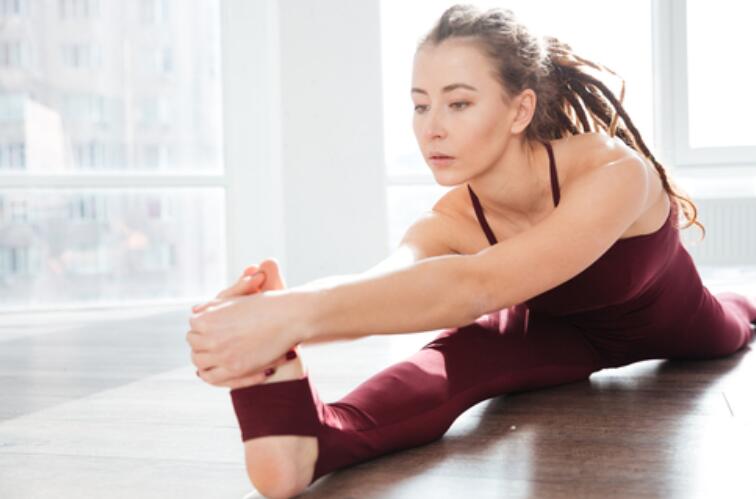If you’ve ever taken a yoga class, chances are you’ve experience the dreaded yoga cramp. You know, that sharp pain that seems to come out of nowhere and won’t go away no matter how many times you adjust your position.
But why do people get muscle cramps in yoga? Is it because they’re not drinking enough water? Or could it be that they’re wearing the wrong type of clothing? Let’s explore some of the possible causes of yoga cramps and see if we can get to the bottom of this mystery once and for all.
The Different Types of Muscle Cramps

There are three main types of muscle cramps: true cramps, tetany, and pseudocramps.
True cramps are the most common type of muscle cramp, and they’re typically caused by overuse or dehydration.
Tetany is a type of cramping caused by low levels of calcium or magnesium in the blood.
Pseudocramps, on the other hand, aren’t cramps at all—they’re simply spasms that can be caused by conditions like multiple sclerosis or Parkinson’s disease.
No matter what type of muscle cramp you’re dealing with, you can do a few things to help ease the pain.
First, try to massage the affected muscle. If that doesn’t work, try stretching the muscle gently. If the pain still persists, try applying heat or ice to the area.
And finally, make sure you’re staying hydrated—dehydration is one of the most common causes of muscle cramps.
Why Do People Get Muscle Cramps in Yoga? 5 Reasons and Solutions

1. Dehydration
If you’re not properly hydrated before you step on your mat, your muscles will be working overtime to try to compensate, which can lead to cramping.
The fix: Drink plenty of water throughout the day, and make sure to have at least 16 ounces an hour or so before your practice. Electrolyte drinks can also help—be careful not to overdo it on the sugar.
2. Lack of Warm-Up
This one’s especially important if you’re going from sitting at a desk all day to an evening yoga class. Your muscles need time to ease into things, or else they might rebel halfway through Warrior I.
The fix: Give yourself a good 10 minutes (or more) to warm up before moving into any challenging postures. Some gentle sun salutations should do the trick.
3. Overstretching Cold Muscles
Stretching is an important part of any workout, but forcing your body into a deep twist or stretch when your muscles are cold can lead to injury—and cramping as your muscles try to protect themselves from further damage.
The fix: Always start workouts with a warm-up, and spend extra time stretching after you’ve broken a sweat.
4. Low Blood Sugar
If you’ve been trying out a particularly strenuous new yoga class or working on mastering inversions, then low blood sugar could be the culprit behind those throbbing muscles.
The fix: Eat something small 30 minutes to an hour before class, like half a banana or a few whole wheat crackers with nut butter. Something with a mix of simple carbs and protein will help give you long-lasting energy without weighing you down.
5. Too Much Caffeine
That cup of coffee or green tea might give you the pep you need for an early morning class, but too much caffeine before practicemight actually dehydrate you and make cramping more likely (see #1).
The fix: If possible, cut back on caffeinefor a few hours before hitting the mat, or switch to decaf altogether. Or better yet, try swapping green tea for matcha—you’ll still get energizing amino acids without as much jitter-inducing caffeine.
Cramp-Busting Yoga Stretches
For the uninitiated, a yoga class can often seem like nothing more than a series of bizarre contortions.
But for those of us who enjoy a good downward facing dog or sun salutation, we know that there’s nothing quite like a good yoga session to help us stretch out our muscles and relieve tension.
However, as beneficial as yoga is, it can also lead to some pretty uncomfortable muscle cramps—unless you stretch properly before and after class.
Before Class: One Legged King Pigeon Pose
This pose is perfect for opening up your hips and lengthening your spine.
To get into position, start on all fours with your knees directly below your hips and your hands slightly in front of your shoulders.
Slide your right knee forward until it’s resting just below your right wrist and point your right toes back so they’re in line with your left knee.
Then, sweep your left leg back and rest the top of your left foot on the floor. If you’re feeling extra flexible, you can clasp your hands behind your back and gently lower your forehead to the floor.
Hold this pose for at least 30 seconds before repeating on the other side.
After Class: Runner’s Lunge with Twisted Triangle Pose
This is an excellent stretch for Quads, Hamstrings, Groin, Hips, Spine, Shoulders, Chest, and Neck.
To get into position, start in a low lunge position with both knees bent at 90 degree angles and your front knee stacked directly above your ankle.
Take a deep breath in and raise both arms overhead then exhale as you twist your torso over your front leg.
Reach down with your right hand and place it on the floor outside of your front foot while extending your left arm toward the ceiling.
Gaze up at your left hand while you continue to breathe deeply for 5-10 breaths before releasing and repeating on the other side.
Conclusion:
There are many possible reasons why people might get muscle cramps during yoga—but luckily, there are just as many solutions. By staying properly hydrated, warming up before class, and being mindful of how your body feels, you can help prevent those pesky spasms from disrupting your flow. Namaste!
